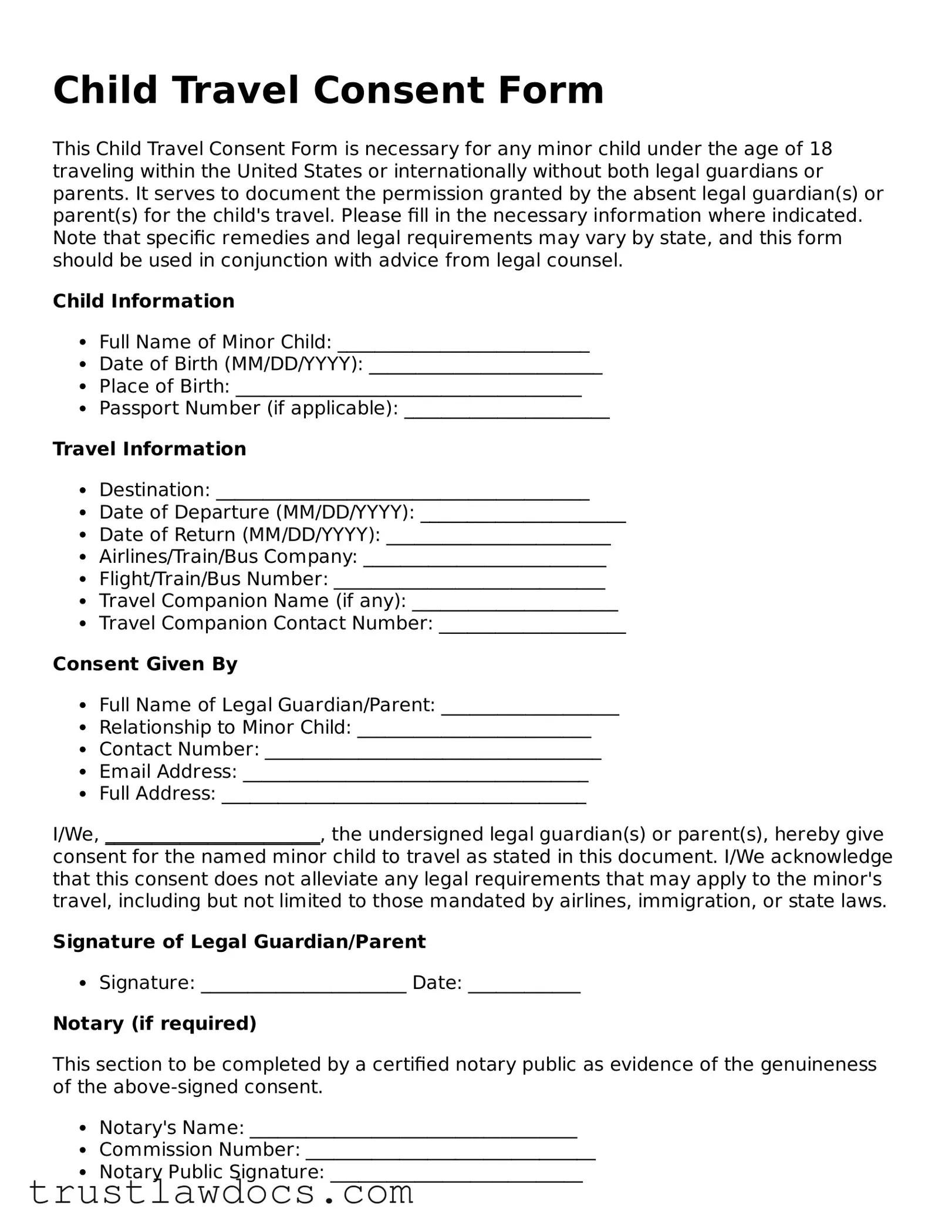What is a Child Travel Consent Form?
A Child Travel Consent Form is a legal document that allows a minor child to travel without both of their parents or legal guardians. It serves as a formal authorization for the child to travel with an accompanying adult, who might be a family member or a friend of the family. The form also typically contains contact information, destination details, and any relevant travel dates.
When is a Child Travel Consent Form necessary?
This form is especially important when a child is traveling domestically or internationally via airplane, and when they are traveling with only one parent or without either parent. It aids in ensuring the child's safety and facilitates their travel. It's also often required by immigration authorities, especially for international travel, to prevent child abduction and trafficking.
Who should sign the Child Travel Consent Form?
The Child Travel Consent Form should be signed by either both parents or the legal guardians of the child. If only one parent has full custody, documentation proving this custody arrangement may also need to be attached. In cases where a legal guardian is involved, proof of guardianship should be provided.
What information should be included in the form?
The form should contain detailed information such as the full names and contact details of the parents or legal guardians, the child’s full name and birth date, information about the accompanying adult, travel dates, destinations, and the mode of travel. Including additional details about the trip's purpose and any medical information or allergies of the child can also be helpful.
Do I need to notarize the Child Travel Consent Form?
While not always mandatory, it is highly recommended to notarize the Child Travel Consent Form. Notarization adds a level of verification and legal authenticity that can be very important, especially for international travel. It assures that the signatures on the form are genuine and helps in smoother dealings with travel and immigration authorities.
How long is the Child Travel Consent Form valid?
The validity of the form can vary and should be stated within the document itself. It can be set for a single trip or multiple trips within a specified time frame. It's wise to consider the duration of the intended travel and any possible changes in plans when determining this period.
Can the Child Travel Consent Form be used for all types of travel?
Yes, the Child Travel Consent Form is adaptable for all types of travel, be it air, sea, or land. However, specific requirements might vary depending on the travel provider or the destination’s immigration policies, so it’s a good idea to check any additional requirements beforehand.
What if the child is traveling with a group, such as a school trip?
If the child is traveling as part of a group or with an organization such as a school, the group leader or organizing body often has their own version of a travel consent form. This form will likely need to be filled out in addition to providing a general Child Travel Consent Form, especially for international trips. It is essential to communicate with the organization to understand all necessary requirements and documentation needed for the travel.
